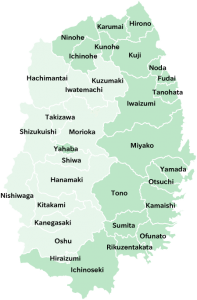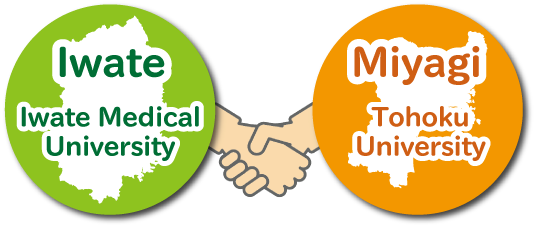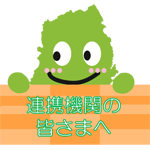What are cohort studies?
A “cohort study” is a one that examines environmental factors, which includes lifestyle (eating habits, alcohol consumption, smoking, etc.), for many individuals. A cohort study tracks these factors over a long period of time so it can examine associations between those factors and illness.
Tohoku Medical Megabank project established two cohorts, a cohort of local residents and a three-generation cohort. Iwate Tohoku Medical Megabank project built the largest genomic cohort in Japan with 150,000 residents of both Iwate and Miyagi Prefectures.
What is the purpose of a cohort study of local residents?
A cohort study of local residents tracks the health of individual residents over several years and examines the impact of stress from this unprecedented disaster [the Great East Japan Earthquake and Tsunami of March 2011] on health. It also studies types of people who are more susceptible to certain diseases under certain conditions. A cohort study of local residents combines surveys of lifestyle and diet with genotyping of blood or urine samples to examine the association between these attributes and illness. Thus, a cohort study of local residents seeks to accurately diagnose illness, predict diseases one would be more susceptible to in the future, and to develop treatments.

What is the purpose of a three-generation cohort study?
A three-generation cohort study is important for future generations; generational cohorts start with the cooperation of a pregnant woman and includes her unborn child, as well as the child’s father, maternal/paternal grandfathers, and maternal/paternal grandmothers. Such a study seeks to reveal the roles played by the environment and genetics in the development of illnesses specific to children. Findings from this type of cohort study will help to improve the child’s health into adulthood through early detection and treatment of disease.
Who can participate?
Residents of designated areas aged 20 years or older can participate.
 【Designated areas】
【Designated areas】
On the coast of Iwate Prefecture (including some inland areas): the City of Kuji, the Town of Hirono, the Village of Noda, the Village of Fudai, the City of Miyako, the Town of Iwaizumi, the Town of Yahaba, the Village of Tanohata, the Town of Yamada, the City of Kamaishi, the Town of Otsuchi, the City of Ofunato, the City of Rikuzentakata, the Town of Sumita, the City of Ichinoseki, the City of Tono, the City of Ninohe, the Village of Kunohe, the Town of Ichinohe, and the Town of Karumai.
(*Designated areas may be changed or expanded)
When will studies start?

New applications for inclusion in the study are no longer being accepted. Participants are asked to continue their participation in the third health survey.
Results will not immediately benefit everyone participating in this Project. However, they will be used to benefit the health of your children, grandchildren, and future generations.











